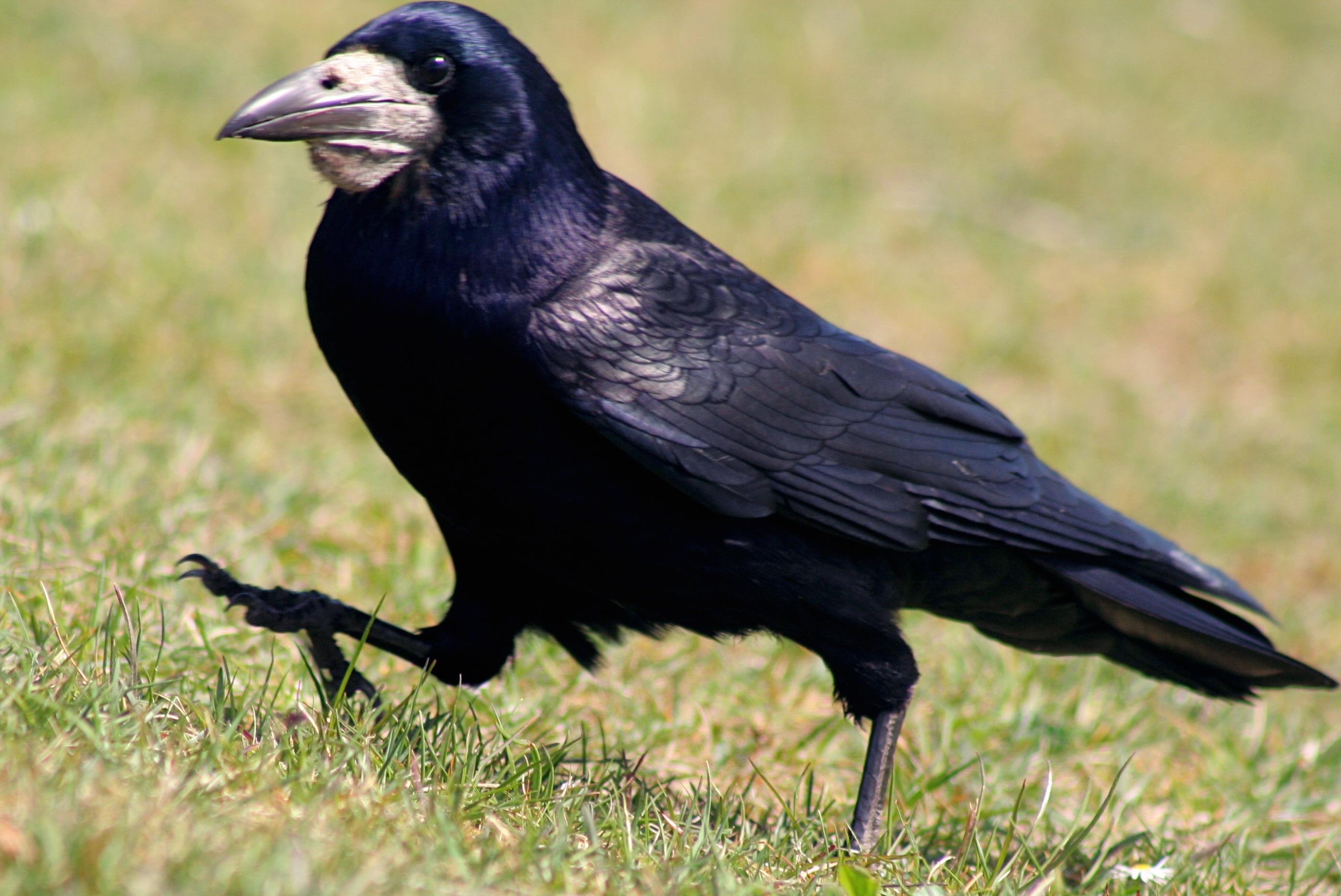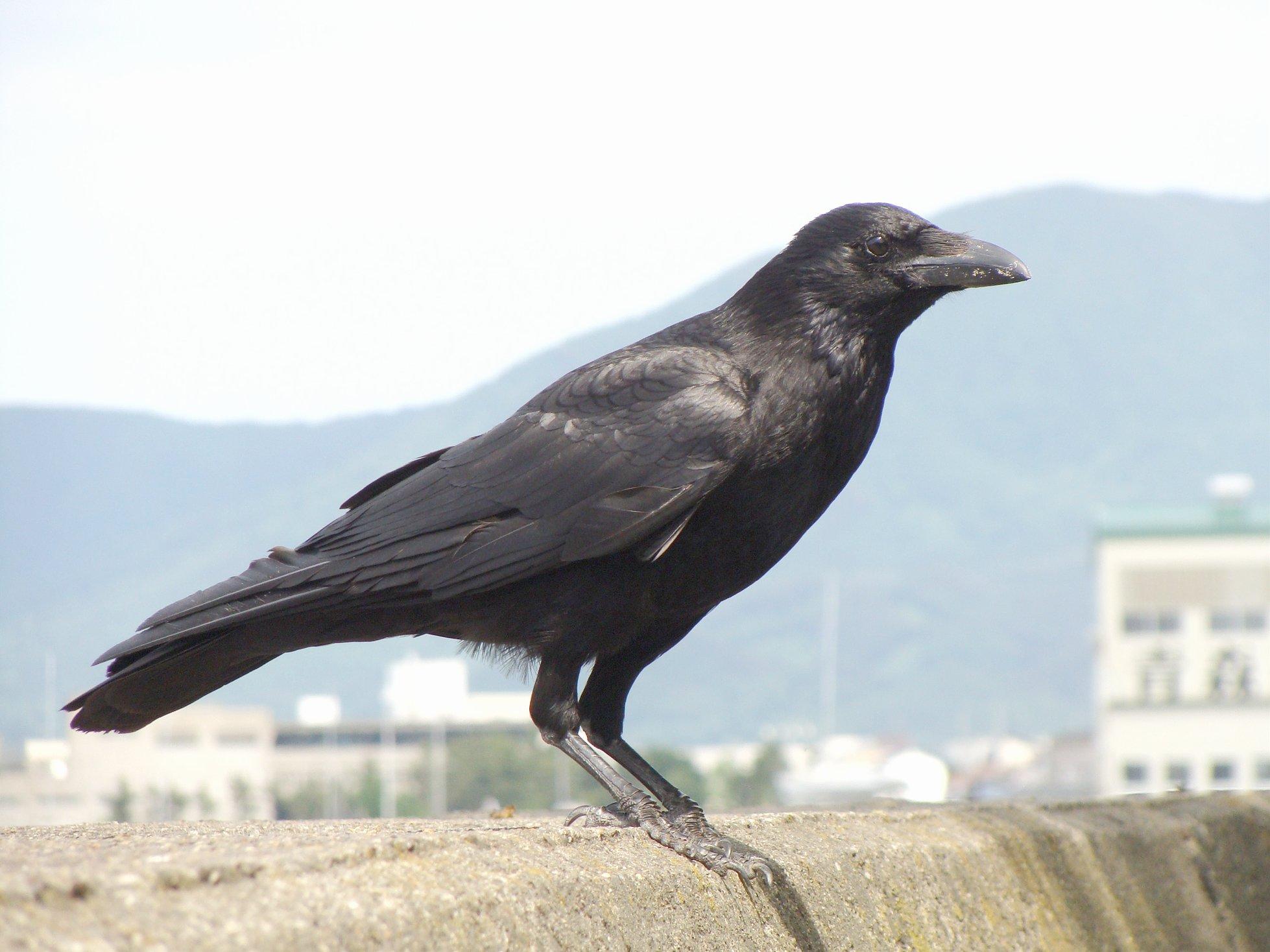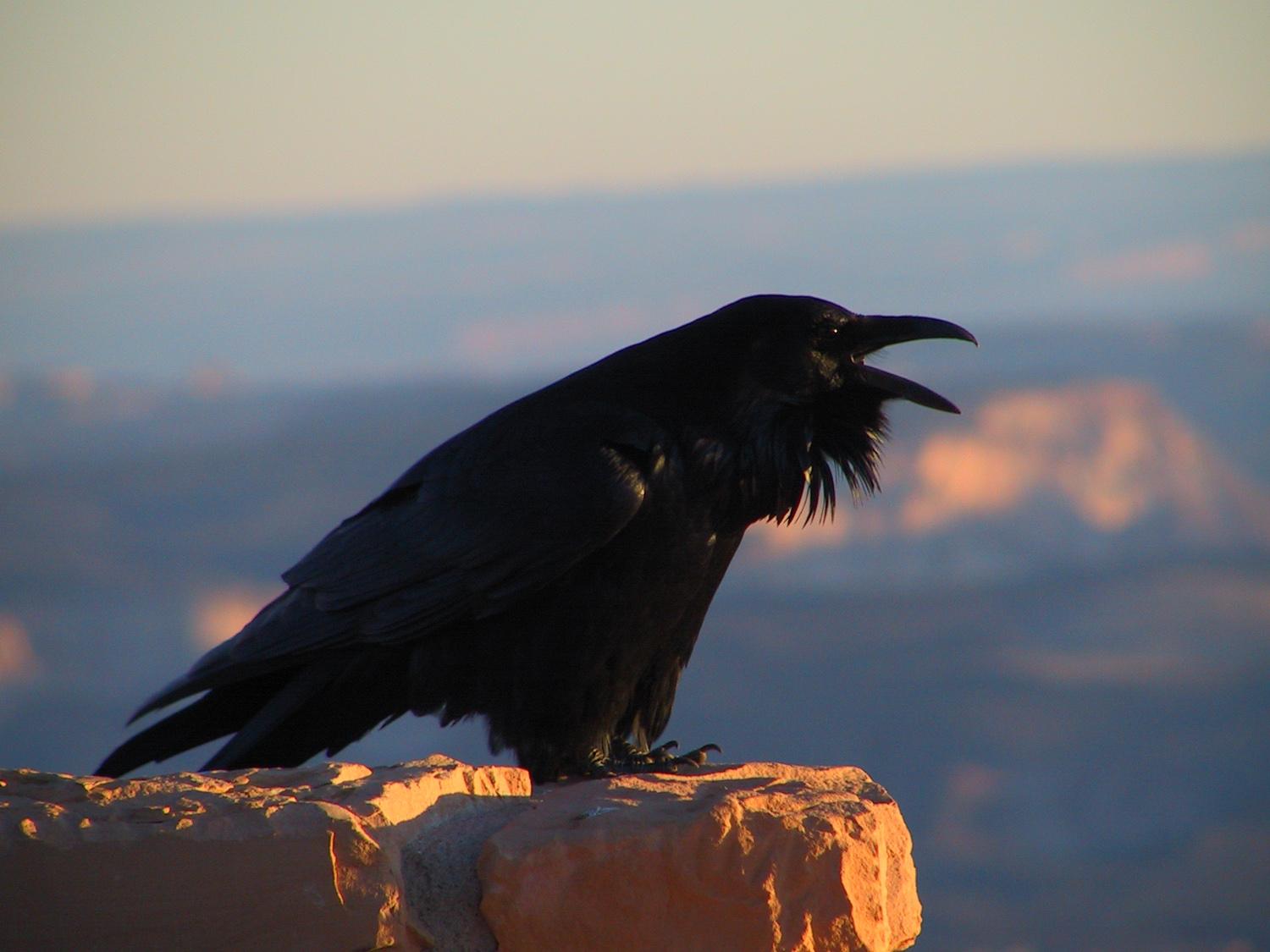Differences Between Crows, Ravens and Rooks

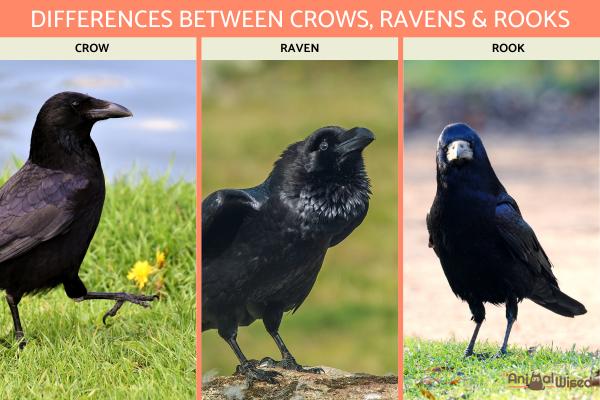
It can be very difficult to tell the difference between a crow, raven and rook as they are all members of the genus Corvus and share various similarities. They are birds with predominately black plumage and dark beaks, although individual species vary in terms of coloration. Knowing their differences in detail can help you determine whether you encounter a crow, raven or rook.
In this AnimalWised we're going to explain the differences between crows, ravens and rooks. This way, you'll be able to tell them apart by sight and know how they differ in other ways too.
- What do crows, ravens and rooks have in common?
- Main differences between crows, ravens and rooks
- Differences in size between crows, ravens and rooks
- Differences in calls and sounds between crows, ravens and rooks
- Differences in habitat between crows, ravens and rooks
- Differences in behavior between crows, ravens and rooks
- Differences in anatomy between crows, ravens and rooks
What do crows, ravens and rooks have in common?
Crows, ravens and rooks all belong to the same genus, Corvus, which explains why they look so similar. The genus Corvus includes about 45 species, which are spread all over the world except for South America, some islands and the Poles. They evolved in Central Asia and spread from there.
In turn, the genus Corvus is classified within the Corvidae family, which includes more than a hundred passerine birds such as choughs, jays and magpies. Corvids are extremely intelligent birds, known for being able to use tools, have excellent memories and recognize themselves in mirrors, which means they have some degree of self-awareness.
Among the similarities between crows, ravens and rooks we can find their medium size and black plumage, which sometimes shows a little gray or white depending on the species. Males and females look quite alike. They can live in cities, as they have omnivorous diets and will find food by scavenging.
Crows, ravens and rooks are sociable animals, and they live in groups. Together, these birds help each other find food, use cawing sounds to communicate and even play just because they feel like it. They live for decades, although the average lifespan is of 20 years in the case of ravens and around 10 in the case of crows.
As you can see, corvids are very diverse. Within the Corvus genus we can find the following raven species:
- Australian raven (Corvus coronoides)
- Brown-necked raven (Corvus ruficollis)
- Chihuahuan raven (Corvus cryptoleucus)
- Common or Northern raven (Corvus corax)
- Fan-tailed raven (Corvus rhipidurus)
- Forest raven (Corvus tasmanicus)
- Little raven (Corvus mellori)
- Thick-billed raven (Corvus crassirostris)
- White-necked raven (Corvus albicollis)
There is even more diversity of crows. The most common ones include:
- American crow (Corvus brachyrhynchos)
- Australian or Torresian crow (Corvus orru)
- Cape crow or rook (Corvus capensis)
- Carrion crow (Corvus corone)
- Collared crow (Corvus torquatus)
- Cuban crow (Corvus nasicus)
- Fish crow (Corvus ossifragus)
- Hooded crow (Corvus cornix)
- House crow or Indian house crow (Corvus splendens)
- Jamaican crow (Corvus jamaicensis)
- Jungle crow (Corvus macrorhynchos)
- Little crow (Corvus bennetti)
- Long-billed crow (Corvus validus)
- Northwestern crow (Corvus caurinus)
- Palm crow (Corvus palmarum)
- Pied crow (Corvus albus)
- Slender-billed crow (Corvus enca)
- Somali crow (Corvus edithae)
- White-billed crow (Corvus woodfordi)
- White-necked crow (Corvus leucognaphalus)
The rook, on the other hand, has the scientific name of Corvus frugilegus. You can see a rook in the picture below:
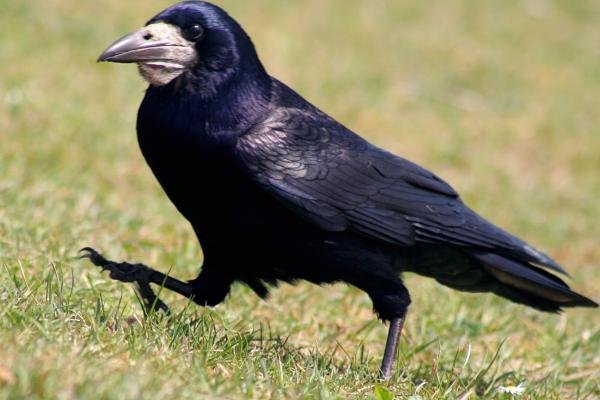
Main differences between crows, ravens and rooks
Before we get into details of each bird, let's take a look at the main differences between these birds:
Rooks
Rooks (Corvus frugilegus) are black birds similar to others in the Corvus genus. However, the differentiate themselves with their pale grey and straight bill. They also have oily and loose plumage, as well as feathery “trousers”.
These birds are often seen in groups known as “rookeries”. You may even see a male court a female by strutting, bowing and cawing. When in flight, these birds have longer wings than crows, a narrow body and a long graduated tail.
Ravens
Ravens (Corvus corax) are large black birds, larger than crows and rooks. These birds are often seen rural areas. Other than their size, the differentiate themselves from other Corvus birds with their deep gravely call that sounds like a “cronk”. These birds mate for life so they are often seen with their significant other, caressing each other's beaks.
They have thick black plumage and a strong heavy bill. When in flight, ravens have large broad wings, well-fingered wing tips and a diamond-shaped tail.
Crows
Crows (Corcus corone) are widespread black birds. They're often seen scavenging for insects or other food. They are different to other corvids due to their tidy black plumage, black bill, square-shaped tail and their call, which is high pitched and usually repeated three times in a row.
Crows do not have feathery “trousers” like rooks and are smaller than ravens, making them easy to differentiate by sight.
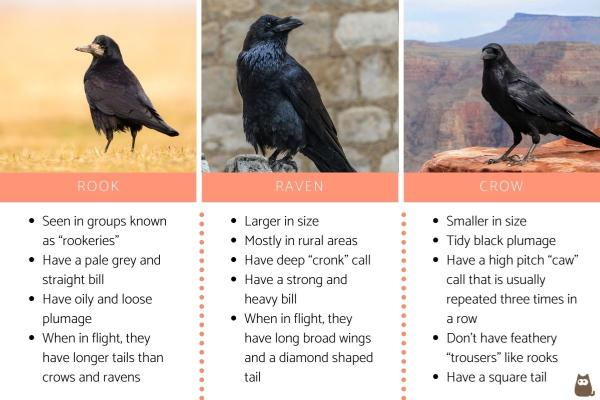
Differences in size between crows, ravens and rooks
As we said before, ravens are generally larger than crows. However, that depends on the species and, of course, the age of the bird.
- American crows measure from 40 to 50 cm (16 to 20 in) long and have a wingspan of 85 to 100 cm (33 to 39 in).
- Carrion crows measure from 48 to 52 cm (18 to 21 in) long and have a wingspan of 85 to 100 cm (33 to 39 in), that is, they are quite similar in size to American crows.
- Common ravens measure from 55 to 67 cm (21 to 26 in) long and have a wingspan of 115 to 130 (45 to 51 in). They are noticeably bigger than crows, and they are among the largest and heaviest passerine birds.
- Rooks measure from 45 to 47 cm (17.5 to 18.5 in) long and have a wingspan of 80 to 90 cm (32 to 36 in). In other words, rooks are smaller than ravens and crows, but the difference is not huge.
In the picture below you can see a carrion crow in a urban environment:
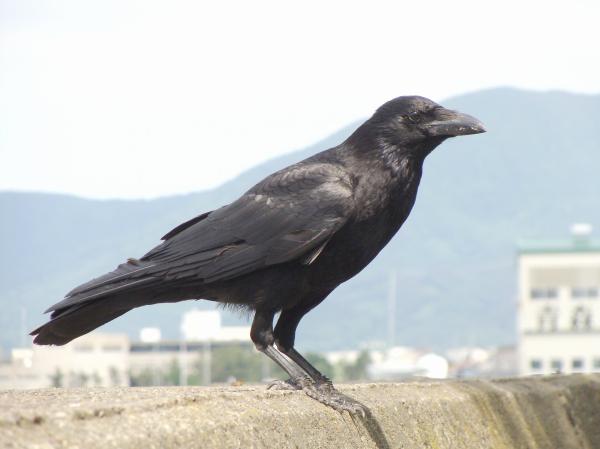
Differences in calls and sounds between crows, ravens and rooks
Each bird from the Corvus genus has its own distinct call. As we said, these birds are extremely clever and have long memories, so they learn to recognize each other by their call alone. Moreover, they can imitate the sounds of other animals and the environment.
- American crows move their head up and down when they produce their harsh and strong caw, which is mostly used to establish a territory. Crows can also make other sounds such as clicks and rattles at different pitches. American crows can be differentiated from fish crows because they do not fluff their feathers when calling.
- Carrion crows usually make three or four calls with a short pause in between. Their call is deeper, like a guttural croak.
- Common ravens have a throatier croak than the American crow, with more vibratto. You can recognize different notes in a raven's caw, as the sound is more complex. Ravens can also make rustling and clicking sounds, as well as chuckles.
- Rooks are actually named after the sound they make. Unlike carrion crows, they make a single, high-pitched and flat call, often accompanied by a bobbing movement.
In the picture below you can see an American crow calling:
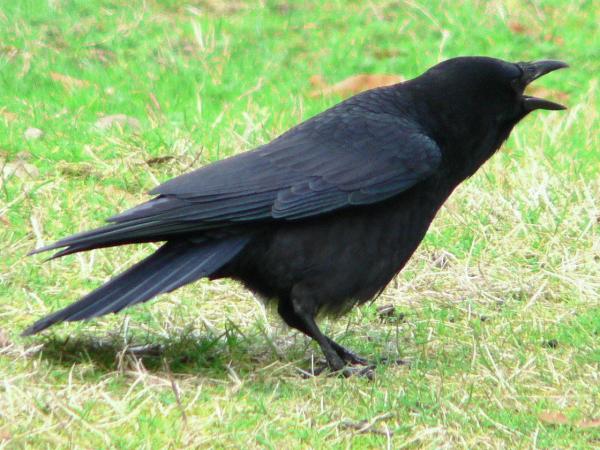
Differences in habitat between crows, ravens and rooks
One of the most obvious differences between crows, ravens and rooks is their habitat and range; in some cases, you will be able to tell them apart just by where you are. All of these corvids can be found in cities within their geographical range, as parks and gardens are great places to scavenge. However, ravens are rarer in urban areas.
- American crows can be found in North America, from the southern half of Canada to the north of Mexico, from coast to coast. They prefer temperate climates, and they will migrate if they live in cold regions.
- Carrion crows can be found in western Europe and eastern Asia, with some spots across the two continents. They are geographically split from their close cousins, the hooded crows, which inhabit eastern Europe and the Middle East.
- Common ravens have the widest range out of all the birds in their family. Ravens adapt well to different climates, and they can be found all across the Northern Hemisphere, from north Africa to the southern tip of Greenland. In fact, common ravens can be found in the Himalayas.
They prefer to live in woods as long as they have open lands or coasts to feed and breed. Common ravens do not migrate except for when they live in colder regions, as they do not enjoy change. - Rooks inhabit Europe and the middle horizontal stripe of Asia, although they do not reach the northern parts of Scandinavia. Unlike ravens, they prefer urban and agricultural areas to forests.
All in all, if you're in America you might be facing an American crow or a common raven. If you're in western Europe, it's a carrion crow, a common raven or a rook. In eastern Europe, it's a hooded crow, a common raven or a rook. If you're in a more extreme climate, like American tundra, the Asian Himalayas, the north African desert or Scandinavia, it's a common raven.
Differences in behavior between crows, ravens and rooks
Crows, ravens and rooks are mostly monogamous, sociable to an extent and raise their chicks in pairs where the two parents feed their offspring and care for them. Let's take a closer look at the differences in behavior:
- American crows are extremely sociable. Their nocturnal roosting sites can host even millions of birds, and they travel in huge groups. They raise their chicks in collaboration, and even older chicks will help raise and protect their siblings.
- Carrion crows are quite solitary, although they can become more gregarious during the winter. If their territories overlap, as happens in some parts of Europe and Asia, carrion crows may share their feeding spots with rooks.
- Common ravens are more wary of others. While they live in flocks when they're young, eventually they find a lifetime mate and establish a nesting territory, which they protect fiercely. After a courtship display of physical ability and mental skill, ravens make their nests on the tops of trees or cliffs. Their chicks will grow up to be very playful; in fact, common ravens often play with other species and even make their own toys.
- Rooks are also very sociable. They meet in large flocks at night, and they make their nests in colonies on trees, called rookeries.
In the picture you can see a common raven:
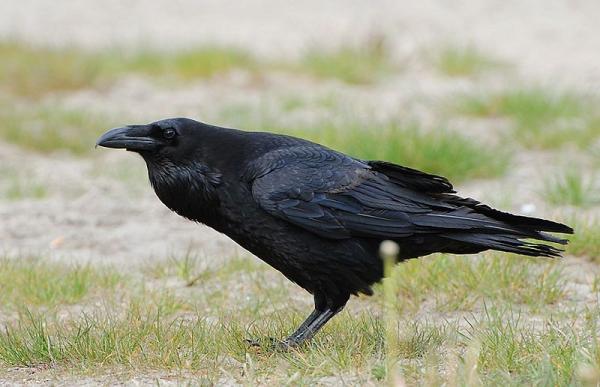
Differences in anatomy between crows, ravens and rooks
Another way of telling a crow, a raven and a rook apart is looking at their appearance in detail, both when perching and when flying.
- American crows have a shorter and flatter bill, a bit wider than that of a fish crow. The feathers around their neck are smooth. In flight, you can recognize an American crow because it will flap its wings, which are blunt. Their tail is fan-shaped, and all the feathers are the same length.
- Carrion crows have a stout bill, and their nostrils are covered in feathers. There is a green gloss to their black plumage. In flight, carrion crows can be recognized by their slower wing beats.
- Common ravens have a bigger, wider and more curved bill than crows and rooks, and there is a hair-like tuft above it. Ravens have longer feathers around their throat, which fluff and puff when calling as you can see in the picture below. Their plumage is shiny and has a blue gloss, and their feet are large. All in all, ravens look stronger and larger than rooks and crows. In flight, you can recognize a common raven because it soars powerfully. Its wings are pointed, and its tail is V-shaped because the feathers down its middle back are longer.
- Rooks have a grayish bill, lighter than the rest of their plumage, which has a blue gloss. You can easily tell a rook apart from a carrion crow or common raven because its nostrils are bare and you can see pale skin around their bill once they become adults. In flight, rooks flap their wings more often than carrion crows. You will be able to notice the shaggy feathers around their legs.
Below is a photo of the common raven:

Now that you know what are the differences between crows, ravens and rooks, why not discover all about other kinds of wildlife? Take a look at the following articles on the differences between alligators and crocodiles and the differences between wasps, hornets and bees.
If you want to read similar articles to Differences Between Crows, Ravens and Rooks, we recommend you visit our Facts about the animal kingdom category.







